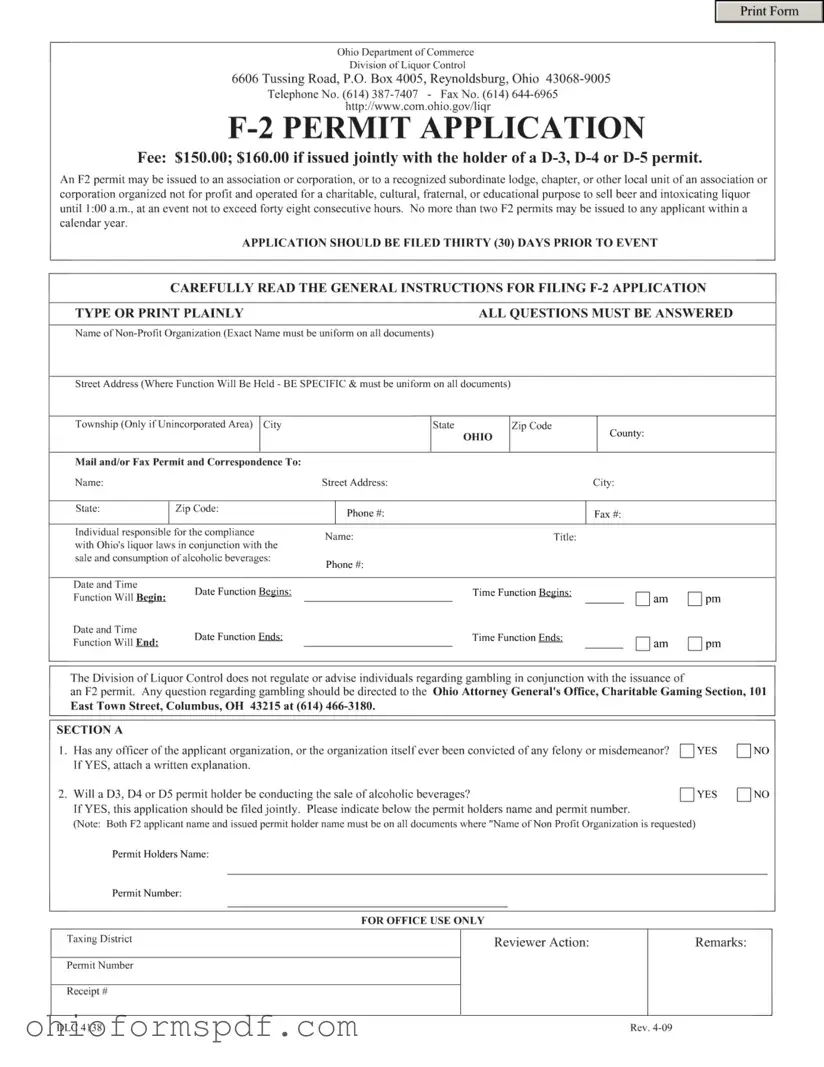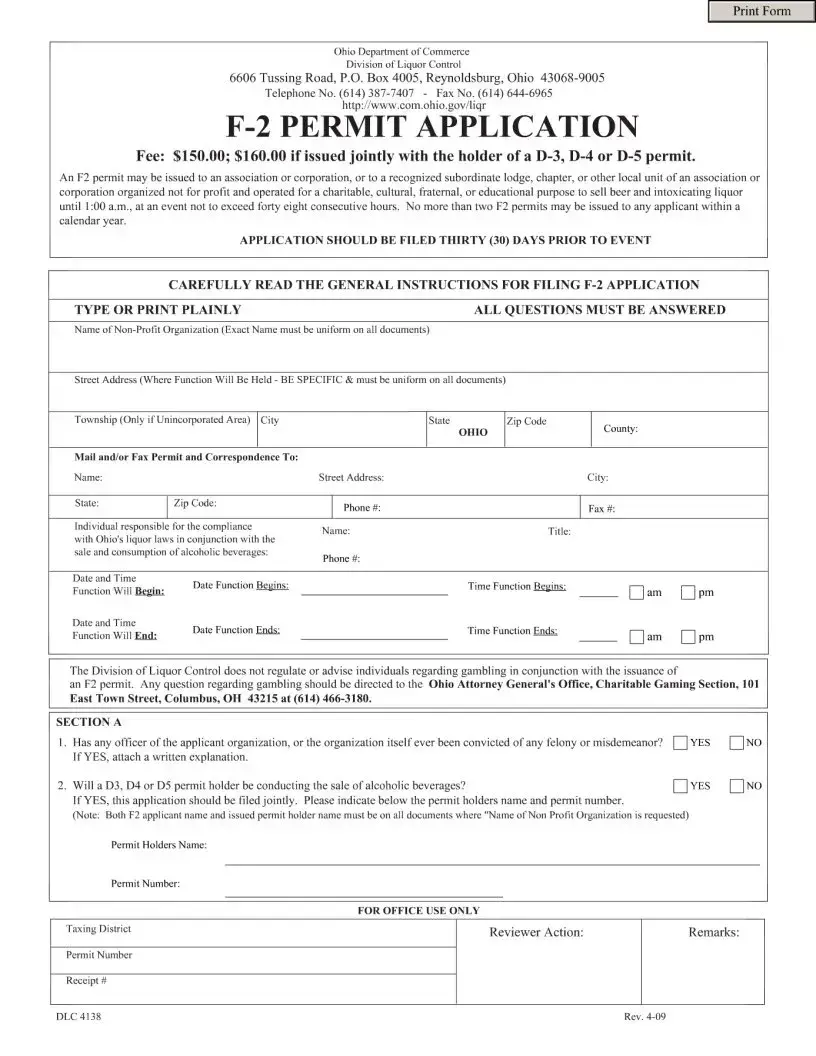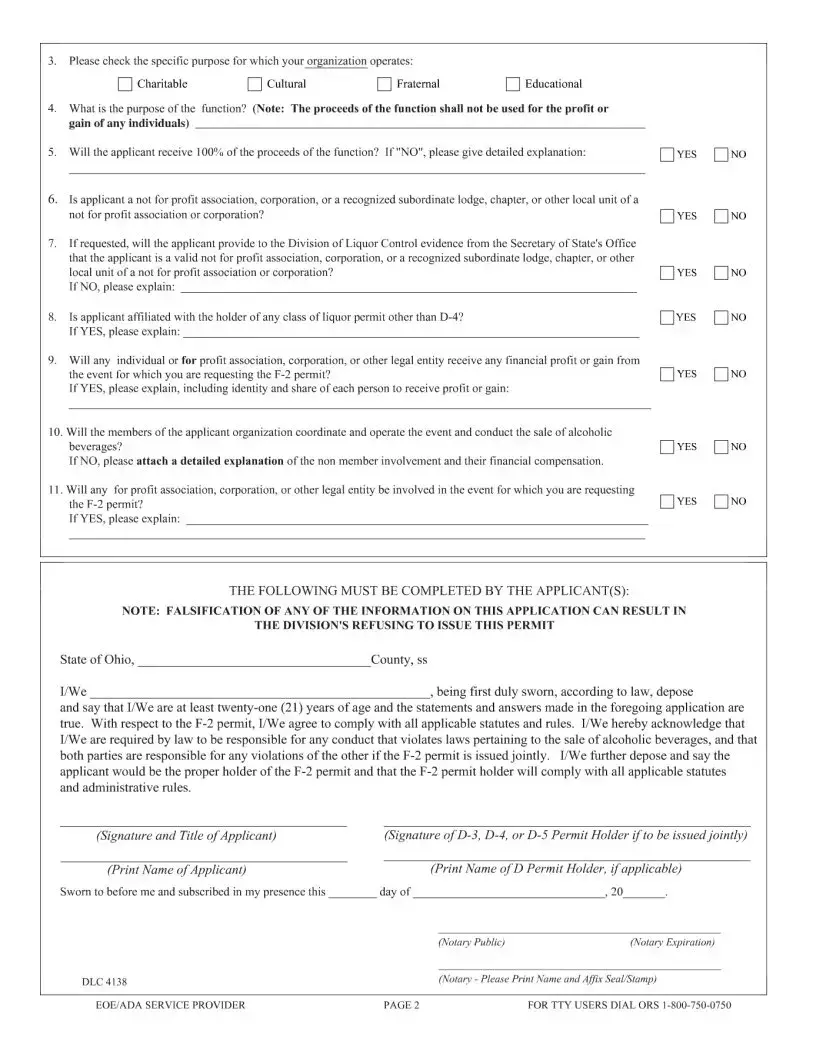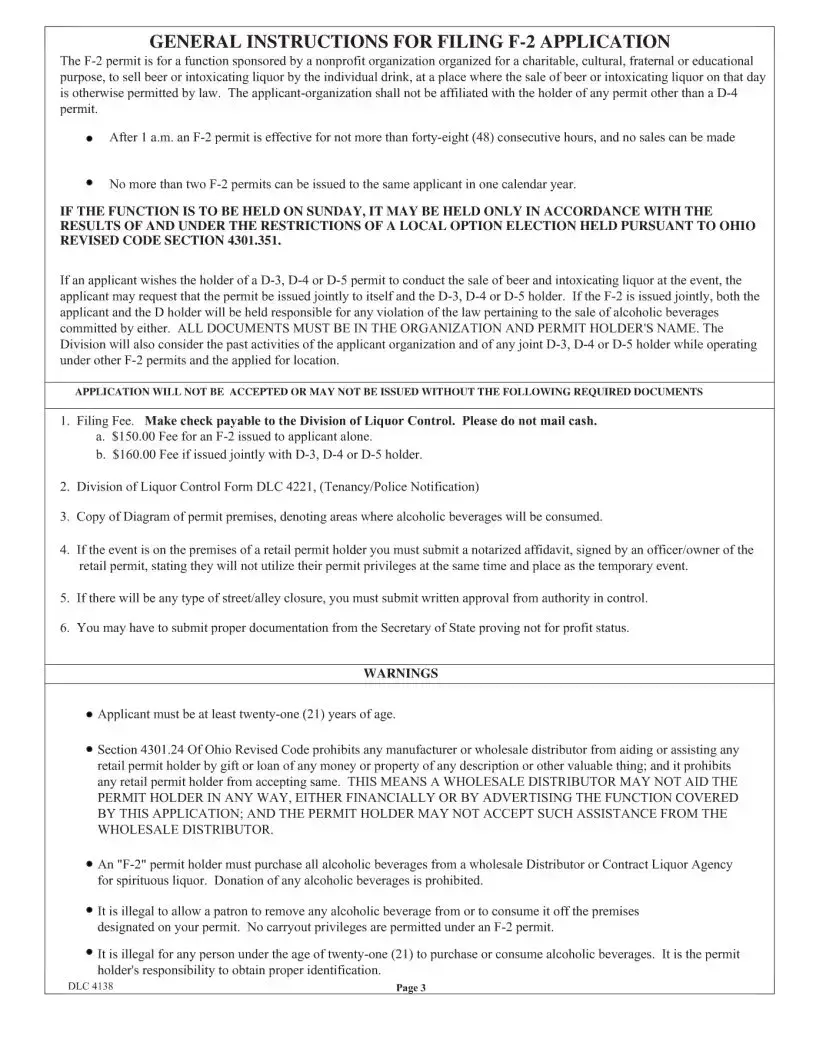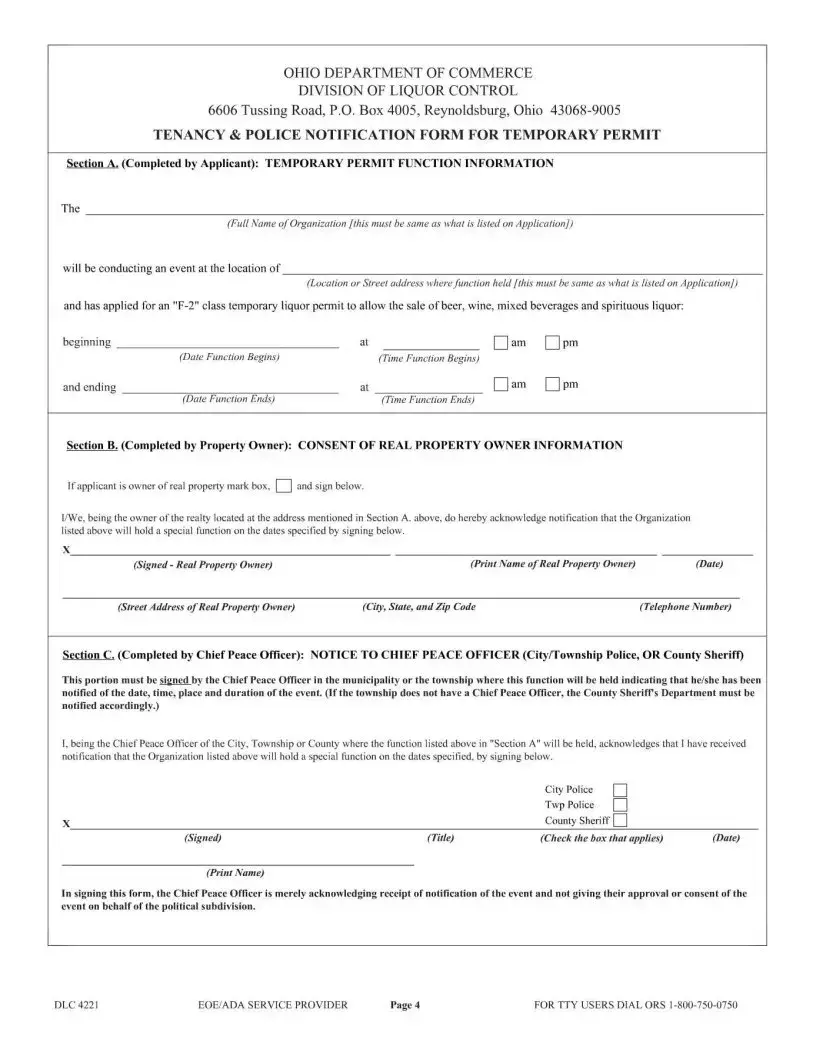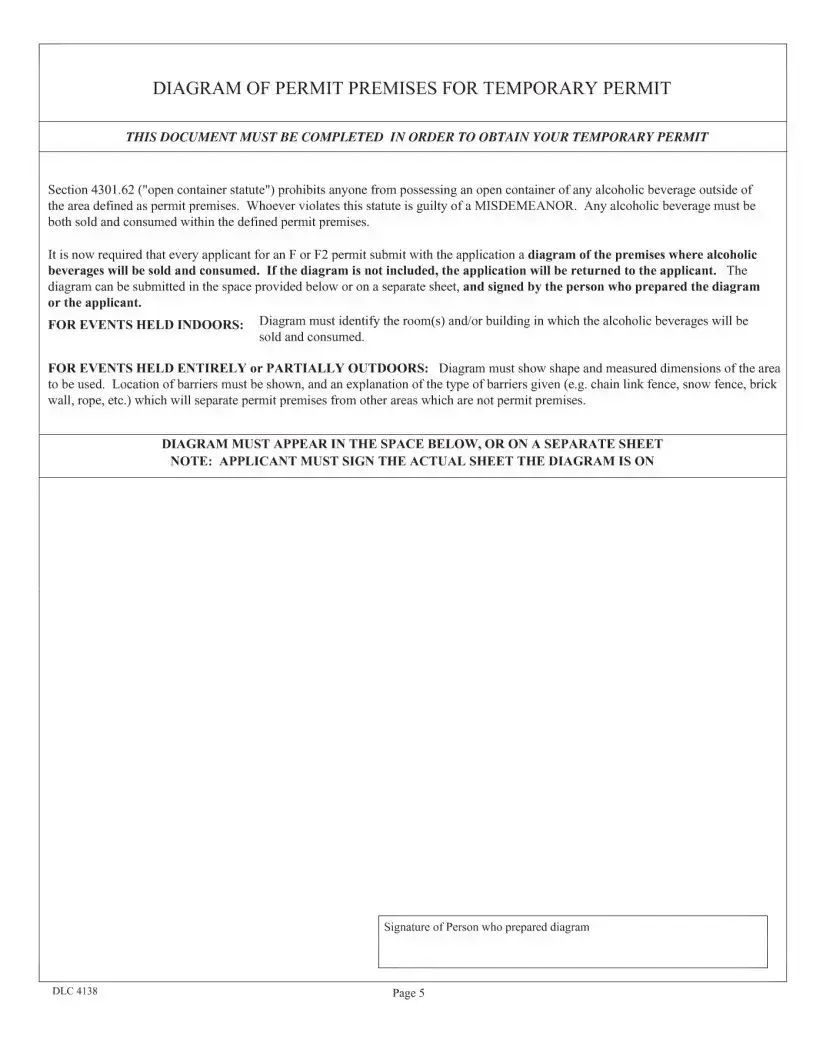What is the Ohio F 2 Permit form?
The Ohio F 2 Permit form is a legal document required in the state of Ohio. It is specifically designed for individuals or entities planning to engage in certain activities that demand state-level authorization. These activities typically involve environmental, health, and safety considerations, necessitating an extensive review process to ensure compliance with Ohio's regulations and standards.
Who needs to complete the Ohio F 2 Permit form?
Any individual or entity that intends to undertake activities covered under the Ohio regulations that necessitate a F 2 Permit must complete the form. These activities can vary widely, encompassing sectors such as construction, manufacturing, waste management, and others that have environmental impacts. It's crucial for applicants to verify their specific obligations under Ohio law to determine if the F 2 Permit applies to their project or operation.
Where can one obtain the Ohio F 2 Permit form?
The Ohio F 2 Permit form is readily available through the official website of the Ohio Department of Natural Resources or the Ohio Environmental Protection Agency, depending on the specific activity requiring the permit. Additionally, local government offices related to building permits and environmental health often provide access to this form and guidance on how to complete it.
What information is required when filling out the Ohio F 2 Permit form?
Filling out the Ohio F 2 Permit form involves providing detailed information specific to the proposed activity. This typically includes the applicant's personal and contact information, a comprehensive description of the proposed activity, location details, and any other information that demonstrates compliance with Ohio's environmental regulations. It may also require the submission of plans, environmental impact assessments, and safety protocols.
How is the Ohio F 2 Permit form submitted?
The submission process for the Ohio F 2 Permit form generally involves both online and offline methods. Applicants should refer to the instructions provided with the form or on the issuing agency's website. Some permits may require online submission through a dedicated portal, while others might have to be mailed or delivered in person to the appropriate state or local agency responsible for processing these permits.
Is there a fee to submit the Ohio F 2 Permit form?
Yes, there is typically a fee associated with the submission of the Ohio F 2 Permit form. The fee amount can vary depending on the type and scope of the activity being permitted. Applicants should consult the specific agency's guidelines for the most current fee schedule and payment methods accepted. In some cases, fee waivers or reductions may be available for qualifying individuals or entities. /p>
What happens after the Ohio F 2 Permit form is submitted?
After submission, the Ohio F 2 Permit form undergoes a review process conducted by the relevant state or local agency. During this period, the agency may request additional information or clarifications. The review process culminates in either the granting or denial of the permit. If approved, the permit will include specific conditions and requirements that the applicant must adhere to. It's important for permit holders to closely follow these stipulations to avoid penalties or revocation of the permit.
Can the decision on an Ohio F 2 Permit application be appealed?
Yes, if an Ohio F 2 Permit application is denied, or if the applicant disagrees with the conditions imposed, there is typically a process in place to appeal the decision. The specific appeals process can vary by agency and type of permit. Applicants should consult the denial notice or contact the issuing agency directly to understand the appeal process and any associated deadlines for submitting an appeal.
